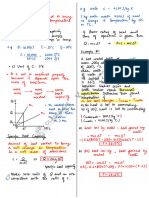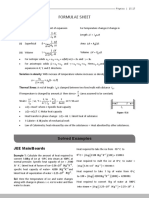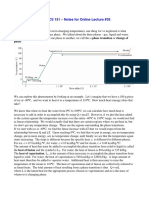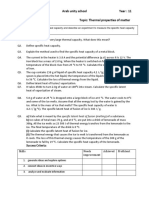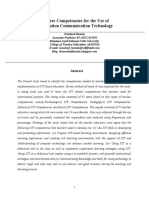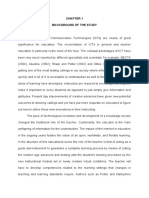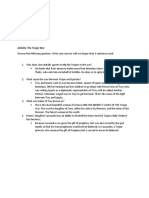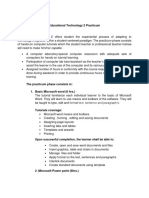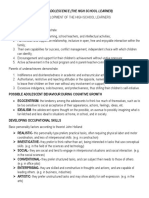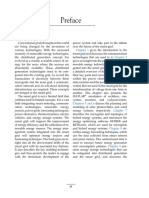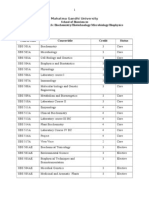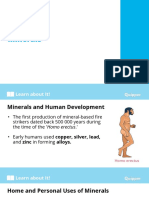0% found this document useful (0 votes)
127 views2 pagesFLA 05 Latent Heat - ELECCION
Sheraldene Chavez Eleccion completed a physics assignment on latent heat. The document included 5 questions asking her to:
1) Define latent heat.
2) Calculate the energy required to melt 2.5kg of gold.
3) Calculate the energy required to melt 200g of copper from room temperature to its melting point.
4) Calculate the time required for 200g of cordial to freeze in a freezer.
5) Calculate the final temperature when 20g ice cubes are added to 500g of 40°C water.
She showed her work and solutions for each question.
Uploaded by
Sheraldene Chavez EleccionCopyright
© © All Rights Reserved
We take content rights seriously. If you suspect this is your content, claim it here.
Available Formats
Download as DOCX, PDF, TXT or read online on Scribd
0% found this document useful (0 votes)
127 views2 pagesFLA 05 Latent Heat - ELECCION
Sheraldene Chavez Eleccion completed a physics assignment on latent heat. The document included 5 questions asking her to:
1) Define latent heat.
2) Calculate the energy required to melt 2.5kg of gold.
3) Calculate the energy required to melt 200g of copper from room temperature to its melting point.
4) Calculate the time required for 200g of cordial to freeze in a freezer.
5) Calculate the final temperature when 20g ice cubes are added to 500g of 40°C water.
She showed her work and solutions for each question.
Uploaded by
Sheraldene Chavez EleccionCopyright
© © All Rights Reserved
We take content rights seriously. If you suspect this is your content, claim it here.
Available Formats
Download as DOCX, PDF, TXT or read online on Scribd
/ 2











